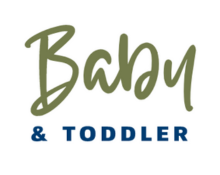
Weaning from breastfeeding is the process of gradually reducing and eventually stopping breastfeeding. It is a natural transition that typically occurs when the child is ready to consume a more varied diet and no longer relies primarily on breast milk for nutrition. Here are some general guidelines and tips for weaning from the breast:
Timing: The timing of weaning is a personal decision that can vary for each mother and child. Some factors to consider include the child’s age, developmental readiness for solid foods, the mother’s readiness, and any specific circumstances or preferences.
Gradual weaning: Gradual weaning is often recommended as it allows both the mother and the child to adjust to the changes gradually. Start by replacing one breastfeeding session with a bottle or cup of expressed breast milk or formula. Over time, continue to replace one feeding at a time until all feedings are replaced.
Introducing alternative milk or formula: If the child is under one year of age, formula can be introduced as a replacement for breast milk. If the child is over one year, whole cow’s milk or an appropriate alternative can be introduced. Consult with your pediatrician to determine the best option for your child.
Distraction and alternative comforts: Engage your child in activities, play, and offer other forms of comfort to distract them from breastfeeding. Provide comfort, snuggles, and reassurance through other means, such as cuddling, singing, or reading a book together.
Change in routine: Adjusting routines and creating new patterns can help ease the transition. For example, if breastfeeding usually occurs before naptime, try changing the routine by offering a different soothing activity before naptime.
Gradually reduce breastfeeding sessions: As you gradually replace breastfeeding sessions with alternative feeding methods, pay attention to your child’s cues and adapt the process based on their comfort and readiness.
Emotional support: Weaning can be an emotional experience for both the mother and the child. Offer extra love, attention, and reassurance during this transition. Be patient and understanding, as it may take time for both of you to adjust.
Remember that weaning is a personal decision, and every mother and child may have different needs and preferences. It’s important to approach weaning in a way that feels comfortable and supportive for both you and your child. If you have any concerns or questions, consult with your healthcare provider or a lactation consultant for guidance and support throughout the weaning process.
